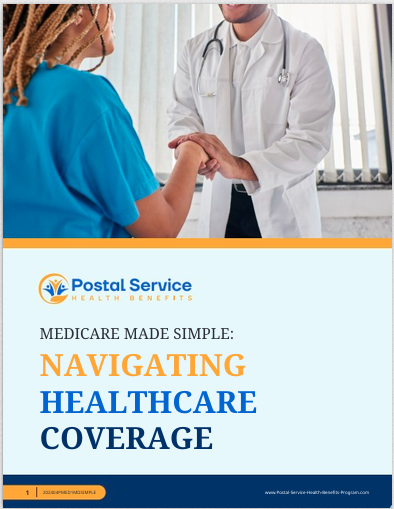Key Takeaways:
- Medicare Part B is a critical component for postal retirees integrating into the new PSHB program starting in 2025.
- Understanding enrollment processes, cost implications, and benefits coordination can help postal retirees navigate the transition smoothly.
How Medicare Part B Integrates with the New PSHB Program
Introduction to Medicare Part B and PSHB Integration
With the implementation of the Postal Service Health Benefits (PSHB) program in January 2025, postal retirees need to understand how Medicare Part B integrates with this new health benefits system. The PSHB program, established under the Postal Service Reform Act of 2022, will replace the existing Federal Employees Health Benefits (FEHB) coverage for postal employees and retirees. This integration aims to streamline healthcare benefits and ensure comprehensive coverage for eligible postal retirees.
Eligibility Requirements for Medicare Part B and PSHB
Eligibility for Medicare Part B and PSHB is interconnected. To qualify for PSHB, postal retirees must be enrolled in Medicare Part A and Part B if they are eligible. This requirement is mandatory for all future Medicare-covered postal annuitants. The eligibility criteria ensure that postal retirees have access to necessary medical services and that their healthcare costs are managed effectively through coordinated benefits.
Enrollment Process: Navigating Medicare Part B for PSHB
The enrollment process for Medicare Part B is crucial for postal retirees transitioning to the PSHB program. Retirees must enroll in Medicare Part B during their Initial Enrollment Period (IEP), which starts three months before their 65th birthday and ends three months after. For those who miss this window, the General Enrollment Period (GEP) runs from January 1 to March 31 each year, with coverage starting on July 1.
Additionally, the PSHB program provides a Special Enrollment Period (SEP) for eligible postal annuitants and their family members, allowing them to enroll in Medicare Part B without a late enrollment penalty. This SEP runs from April 1, 2024, to September 30, 2024, offering a penalty-free opportunity for those who previously declined Medicare Part B.
Cost Implications: Understanding Premiums and Coverage
Medicare Part B requires a monthly premium, which is adjusted annually based on income. The cost implications for postal retirees include this premium, along with any deductibles, copayments, and coinsurance. Under the PSHB program, these costs will be coordinated with Medicare Part B coverage, potentially reducing out-of-pocket expenses for retirees.
PSHB premiums are structured to align with the benefits offered and the demographic of postal retirees. This integration is designed to ensure that the overall cost of healthcare remains manageable while providing comprehensive coverage.
Benefits Coordination: How Medicare Part B Enhances PSHB
The integration of Medicare Part B with the PSHB program enhances benefits coordination, ensuring that postal retirees receive comprehensive healthcare coverage. Medicare Part B primarily covers outpatient services, doctor visits, preventive services, and durable medical equipment. When combined with PSHB, which covers additional healthcare needs, retirees benefit from a more extensive network of services and providers.
This coordination reduces redundancy in coverage and helps manage healthcare costs effectively. For instance, Medicare Part B can be the primary payer for outpatient services, while PSHB covers the remaining costs, minimizing out-of-pocket expenses for retirees.
Prescription Drug Coverage: The Role of Medicare Part D
While Medicare Part B covers many medical services, it does not include prescription drugs. This is where Medicare Part D comes into play. Under the new PSHB program, all PSHB plans are required to provide prescription drug benefits for Medicare Part D-eligible postal retirees through an employer group waiver plan (EGWP). This ensures that retirees have access to affordable prescription medications, coordinated seamlessly with their PSHB coverage.
Special Enrollment Periods for Medicare Part B and PSHB
The PSHB program recognizes the need for flexibility in enrollment periods, particularly for retirees who may have missed their initial enrollment opportunities. The Special Enrollment Period (SEP) allows eligible postal annuitants and their family members to enroll in Medicare Part B without facing a late enrollment penalty. This SEP is a crucial component of the PSHB program, providing a window from April 1, 2024, to September 30, 2024, for penalty-free enrollment.
This period is designed to facilitate a smooth transition to the new health benefits program, ensuring that all eligible retirees are adequately covered.
Key Dates and Deadlines for Seamless Integration
Understanding key dates and deadlines is essential for a seamless transition to the PSHB program. Here are some important milestones:
- Initial Enrollment Period (IEP) for Medicare Part B: Begins three months before turning 65 and ends three months after.
- General Enrollment Period (GEP) for Medicare Part B: January 1 to March 31 each year, with coverage starting July 1.
- Special Enrollment Period (SEP) for PSHB: April 1, 2024, to September 30, 2024, allowing penalty-free Medicare Part B enrollment.
- PSHB Program Coverage Start Date: January 1, 2025, marking the official transition from FEHB to PSHB for postal retirees.
By adhering to these timelines, postal retirees can ensure they have continuous and comprehensive healthcare coverage.
Comprehensive Health Coverage for Postal Retirees
The integration of Medicare Part B with the PSHB program represents a significant shift in how postal retirees will manage their healthcare benefits. By understanding the eligibility requirements, enrollment processes, cost implications, and benefits coordination, retirees can navigate this transition effectively. The addition of Medicare Part D for prescription drug coverage further enhances the comprehensive nature of the PSHB program.
Postal retirees should take advantage of the Special Enrollment Period and key dates to ensure they are fully covered under the new program starting in 2025. By staying informed and proactive, retirees can make the most of their health benefits and enjoy a secure and well-managed healthcare experience.
Contact Information:
Email: [email protected]
Phone: 4635555678






